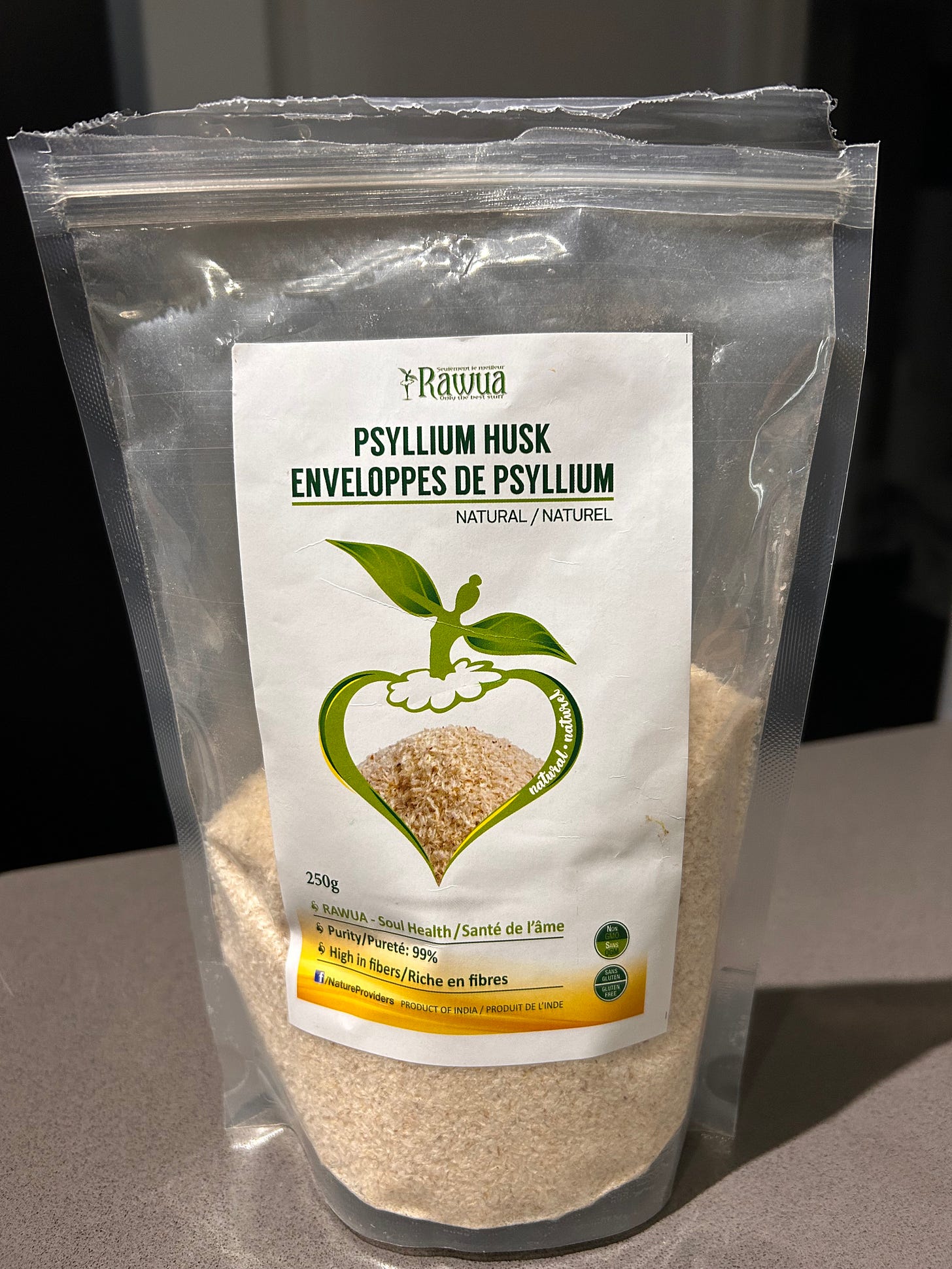Thursday Thrive #3: How to Get More Fiber + Why Peanut Butter is NOT a Good Protein Source
Happy Thursday!
Couple of quick nutrition tips for you today:
We’ll discuss an easy system to understand what makes a “good” protein source
A hack to get more fiber, and why this should interest you
“Is peanut butter a good source of protein?”
Quinoa?
Broccoli?
Avocado?
Eggs?
Nuts?
I get asked these questions a lot, sometimes by my clients.
There are 3 important metrics we use to determine the quality of a protein source.
If a food wins at all 3 of these metrics, it’s an excellent source of protein.
Let’s break it down.
#1. Protein to energy Ratio
You want your protein consumption to be energy efficient so you don’t have to eat too many calories to get your protein.
A good ratio is 10 calories for every gram of protein - so if something has 200 calories, it will have 20g of protein.
This is good, and anything better than this is excellent.
You’ve possibly heard that peanut butter is a good source of protein.
And it’s true - you can get 25g of protein from 100g of natural crunchy peanut butter.
100g of lean sirloin steak (no fat) is only 29g of protein - a measly 4 grams more.
So does this mean these 2 are comparable?
Not when you look at the energy.
The peanut butter is 650 calories whereas that amount of steak is only 160.
The steak is 4x more calorie efficient than the peanut butter.
This is because peanut butter is almost entirely fat with a bit of protein.
If you try to use peanut butter to hit your daily protein goal, you may put on some muscle but you’ll be adding a lot of body fat too.
And what about eggs?
100g of eggs is 155 calories for 12.5 grams of protein.
This is okay - but it’s not great. Better than peanut butter, but if you want to make eggs a better protein source, focus more on egg white (this is where all the protein is).
#2. Protein-to-Volume Ratio
100g of broccoli is 34 calories and just under 3g of protein.
That’s a decent protein percentage, only slightly under the 10% mark we’re looking for.
So does that mean broccoli is a good protein source?
Let’s see.
A serving of protein needs to be at least 20g since this is the amount that triggers muscle protein synthesis (this is why most protein bars are 20 grams of protein).
How much broccoli will you need to eat to get that serving of protein?
8 cups of broccoli.
730g of broccoli.
Even vegans will struggle with that one.
Sure, it’s only 250 calories, but I’m pretty sure I’m sleeping on the couch if I eat 8 cups of broccoli.
For a protein source to be “good” it needs to be possible to consume enough of it to get a minimum serving (20g) of protein without fumigating your wife with broccoli farts.
If you can get at least a 20g serving in a 100g serving AND that serving doesn’t contain too much energy relative to the protein — it’s a “good” protein source.
#3. Amino Acid Profile
Proteins are molecules made of compounds called Amino Acids.
Amino acids are not created equal when it comes to building lean mass.
There are 21 total and 9 are “essential” because we need to get them from food.
The amino acids that are most important for muscle protein synthesis are the “branch chained amino acids:” leucine, isoleucine, and valine.
Leucine is thought to be the most important amino acid for triggering muscle protein synthesis, and there isn’t much debate about this.
So if a protein source has more leucine, it’s arguably a better protein source than one with less leucine.
It’s ideal to get 3-4 g of leucine per day, but if you’re training hard, you’ll want this closer to 10.
The 100g of peanut butter we had (that cost 650 calories) has 1.5 g of leucine.
The 8 cups of broccoli only has 0.9.
The steak has 2.7 grams - making it the clear winner.
The honest truth (sorry vegans) is protein sources with the best amino acid profiles are animal products.
Beef, fish, and poultry are excellent sources of leucine and other essential amino acids.
You can still get solid protein sources if you’re vegan, it’s just trickier.
If a protein source has:
A good protein-to-calorie ratio
A good protein-to-volume ratio
A solid amino acid profile
It is an excellent protein source.
An Easy hack to get more fiber
I don’t mean to brag, but I’m pretty good at protein.
I hit my protein target every day, and I almost never miss.
But one area I struggle with is fiber.
I find it hard to get enough fiber. As a human male, I should be getting at least 38 grams of fiber per day, and ideally closer to 50!
But I’m often closer to only about 20 grams of fiber.
You get fiber from fruits, veggies, potatoes and yams, and whole grains.
Fiber is technically considered a carb, but it’s unique because it doesn’t get fully broken down in the digestive tract.
If you’re eating below 30 grams of fiber per day, you want to get this higher for a few reasons:
Fiber, like protein, helps you feel satiated.
Fiber helps keep you regular in the bathroom.
A high fiber diet is thought to be the best thing you can do for your gut health
According to this meta analysis, fiber intake contributes to a reduction in all-cause mortality
So how do you get more fiber?
The first step is to know how much you get.
Download the Cronometer app (this is the app I’ve been using for 3+ years) and track what you eat for a day or two.
Observe how much fiber you get (Cronometer is cool because it’s not a “calorie counting” app, it’s a nutritional science app. You get a complete breakdown of all vitamins and minerals so you can see where you’re deficient).
It’s probably too low.
Step 1. Make some swaps to get more fiber
More potato and yam over refined carbs
Whole grains over white flour
More fruits and veggies
Step 2: Get some Psyllium Husk
Step 2 is the “hack” I was talking about.
If you google psyllium husk, you may see it labeled as a laxative.
But that’s really because it’s essentially pure fiber, and fiber helps increase bulk in stool which reduces constipation.
Psyllium husk is taken from psyllium seeds, and 1 Tbsp has 5g of fiber.
Its benefits include reducing LDL cholesterol and improving gut health and IBS symptoms.
And helping you hit your fiber intake.
This is the psyllium husk I take:
It has a gentle, somewhat nutty flavor.
Not unpleasant, but not something you’d have for the taste.
I’ve put it in yogurt and oatmeal before, but I prefer to mix it in a glass of water.
There are lots of options to pick up some psyllium husk on Amazon, but you can also probably find it at your local supplement/vitamin store.
Hope those tips are useful!
Have a great weekend -
Colin “Peanut butter is not a good protein source” Matson





